2016 Mazda2 European Review
The Mazda2 is another car whose absence in the US market will bring tears to the eyes of driving enthusiasts – and rightly so, because it’s a great little car. At the same time, it was probably the right call by Mazda not to import it to the States. This car can truly shine, but wide open American roads are not the right place for it, no matter how much canyon carving petrolheads would like them to be.
Ask a typical automotive enthusiast or petrolhead about modern cars and you’ll probably hear they are rubbish and the older cars are “just right”. You’ll hear modern cars are too full of electronics. They’re too bloated. The driver is isolated too much from the task of driving. With everything being focused on comfort, safety and economy, the joy of driving suffers.
Try to explain this to the typical car buyer and you get a blank stare in return, which is why the Mazda2 won’t be a sales hit in Europe, and would be a flop in America. It’s is a shame, really, because it’s a wonderful little car.
So, why won’t people buy one over, say, the Citroën C4 Cactus or Škoda Fabia? Or some tiny little crossover, which is actually less practical, but more expensive? Let’s explain it on the Fabia, which I tested recently, and which is a direct competitor to the 2 on European market.
As I mentioned several times in the review, sitting in the Fabia feels like you’re in a bigger car than its dimensions suggest. It uses the architecture and interior design language of bigger Volkswagen products and drives in a very “grown up” and confident manner. While a decade or two ago, a supermini was something you bought only to drive around town, the Fabia is a perfectly capable highway cruiser – or it would be, if it had more power.
The Mazda, on the other hand, feels and drives like a small car. Truth be told, the 2 I borrowed for this review was a poverty-spec example with the base 75 hp 1.5L four-cylinder engine while the Fabia esd equipped with its available top-of-the-line 110 hp 1.2 turbo plant, but that doesn’t change much about the way both cars feel.
The first difference is obvious: the Fabia is just larger inside. This is to be expected, as Fabia plays the “half a class above the competitors” game that’s typical for Škodas. However, the Mazda is a bit small even when compared to the average of its class, with cramped rear quarters and a relatively small boot. If you want to use your supermini as a family car, this will not work as well as the Fabia.
Then there’s the interior ambiance. The Mazda’s cabin is quite pretty to look at and everything feels slender, smooth and stylish. The Mazda’s “sports car feel” is in contrast to the Fabia and its direct competitors offering up their “big car” interior atmosphere. It’s in the details: a tiny rev counter in the corner of the dash instead of proper dial. Radio or infotainment system sticking out of the dash like a sore thumb. And, of course, the slightly tinny sound made by closing doors.
Don’t get me wrong – the Mazda’s interior doesn’t feel cheap or ugly. It’s just a tad too obvious the main concern was saving weight and not creating a luxurious experience for those inside. Today’s customers want to be pampered.
What they do not appreciate are the finer things in automobile that we as enthusiasts hold supreme, like sublime suspension tuning or a lovely, naturally aspirated engine paired with a precise, delicate manual transmission. Which is sad, because those count among the main reasons for buying a Mazda2.
Let’s start with the engine first. As I already mentioned, my press loaner was powered with the least powerful, least sophisticated version of the 1.5 SKYACTIV four-cylinder. It lacks the trick 4-2-1 headers, crazy compression ratio and – on paper – it looks seriously underpowered. Compared to both superminis I drove before and after the Mazda2 (the aforementioned Fabia 1.2 TSI and Corsa 1.0 Turbo), its 75 hp seems almost like a joke.
Trust me, it isn’t. Having driven a few cars with N/A engines neutered by EU5 emission standards lately, I started to think that turbocharging is the only remaining way to go. Mazda proved me (and probably many others) wrong. There is nothing neutered about this engine. Thanks to its large displacement (for a base engine in an EU-market supermini), it’s not lacking torque in the low range, and it somehow keeps the rev-happy characteristics of a classic Japanese four-pot. I’ve never been a great fan of revvy four-cylinders and I actually like the diesel version of Mazda6 more than the gasoline one, but the four-banger in the Mazda2 is a delight. I found myself revving it right to the redline just for fun and, of course, sometimes out of necessity because 75 hp isn’t really much. That’s not to say the 2 is unbearably slow. On the contrary, it was much quicker than I expected and at normal pace it was perfectly fine. I was surprised by its ability to overtake at A-road speeds (around 60-65 mph in CZ), as well as its relative stability and bearability near the top speed of about 110 mph.
Which neatly brings us back to the suspension. The example I tested is probably the least sporty Mazda2 that can be ordered. Small, 15 inch steel wheels with plastic hubcaps and narrow, tall tires. Couple that with a relatively soft suspension and light, city-biased steering with almost no feel or weight whatsoever, it doesn’t sound like a “sporty” small hatchback. As you’ve probably guessed, though, the opposite is true. The 2 represents what I would call the “English school of suspension tuning”. It isn’t low and stiff like German sports cars, designed for impeccable Teutonic roadways. Instead, it uses its suppleness and light weight to be quick and nimble even on broken surfaces – and to be comfortable enough that you don’t get scared off a “spirited drive” by the jolts and jittering.
If I were to distill the previous paragraphs into one sentence, it would sound like this: Unlike the Fabia, which tries hard to feel like an Octavia or Passat (and succeeds to a remarkable degree), the Mazda2 tries really hard to feel as much like a Miata as possible (and succeeds as well). It’s a pretty, lightweight little hatchback with a lovely engine that’s a hoot to drive. The problem for you, our readers from US, is the typical American buyer has precious little appreciation for things like balanced handling or a sweet, revvy, naturally aspirated engine. It’s nice that it gets great fuel mileage (over 30 mpg even in a bit of a rush), but it probably won’t really shine when coupled with its available automatic transmission. Also, the great, nimble suspension will be of little use during typical American commute.
The good news? The CX-3 crossover shares a platform with this car. The first CX-3 reviews promise that it may provide much of the things that are great about the 2 while looking large and substantial enough to allure a typical American customer. Considering the base CX-3 with 120 hp 2.0L SKYACTIV engine costs about the same money on the Czech market as the Mazda2 with a 90 hp SKYACTIV 1.5 and only marginally better equipment is probably the real (and quite understandable) reason why Mazda is pulling the plug on the Mazda2’s U.S. sales. Both cars probably cost roughly the same money to build, with the CX-3 being much more interesting to a typical American and only marginally worse for a driving enthusiast.
@VojtaDobes is motoring journalist from Czech Republic who previously worked for local editions of Autocar and TopGear magazines. Today, he runs his own website, www.Autickar.cz. After a failed adventure with importing classic American cars to Europe, he is utterly broke, so he drives an Alfa 164 Diesel he got for free. His previous cars included a 1988 Caprice in NYC Taxi livery, a hot-rodded Opel Diplomat, two Dodge Coronets, a Simca, a Fiat 600 and Austin Maestro. He has never owned a diesel, manual wagon.
Photography: David Marek
More by Vojta Dobe
Latest Car Reviews
Read moreLatest Product Reviews
Read moreRecent Comments
- Wjtinfwb Rivaled only by the Prowler and Thunderbird as retro vehicles that missed the mark... by a mile.
- Ravenuer Haven't seen one of these in years! Forgot they existed.
- Pig_Iron I one of those weirdos who liked these.
- SCE to AUX Inflation adjusted $79k today (!), so I guess $28k is a bargain....This is another retro car that was trying too hard, but it is very nice.
- EngineerfromBaja_1990 It might provide an edge in city driving but from what I've read elsewhere the Hybrid trucks are 600 lbs to 700 lbs heavier than the gas only trucks. That translates to a curb weight of around 5000 lbs which is not uncommon for a full size truck.And a test drive suggested the Hybrid is not quicker than the gas only trucks. So it looks like the Hybrid powertrain is pretty much compensating in power for all that added weight while not providing significant fuel savings. Not what many would expect after shelling out an extra $5K - $7K for the next step up in power.




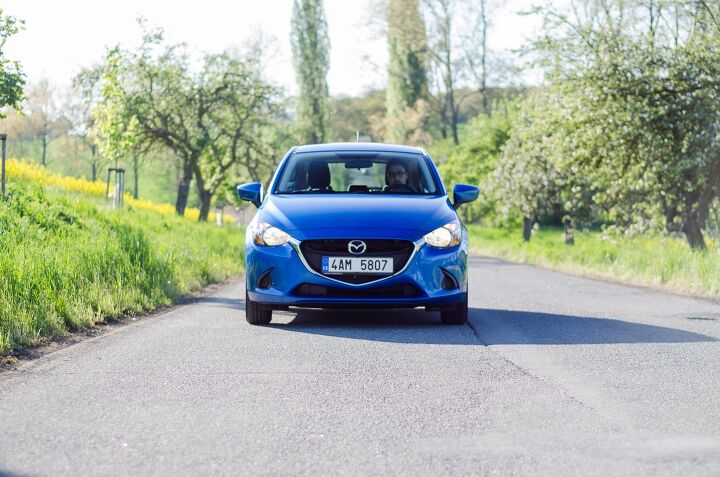




















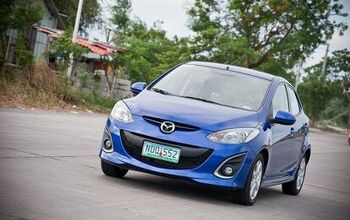
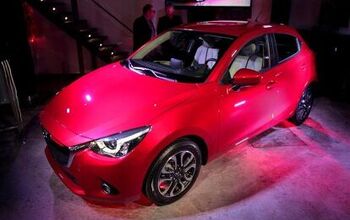

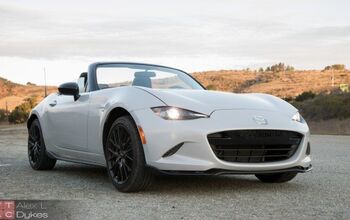
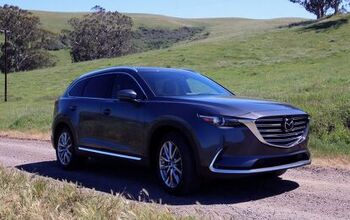













Comments
Join the conversation
These style of vehicles will become more popular in the US like they are in Australia and Canada. The reason for this as we urbanise and air fares drop you will see more people who just need a car to drive to and from work. Back in the days of yore when I was a kid in the US and Australia the family would road trip to travel and holiday. This was common place back then. Now we jump on a flight and pick up a rental at the other end. These vehicles are acceptable for a two or three hundred mile jaunt on highways traveling at 80mph. These types of vehicles will become more apart of the future in the US. Plus, it is a nice little vehicle.
Looks like they're mimicking Lexus and their dash designs a bit there, with the horizontal bit running full width. While this isn't the sort of car I'd buy even if it were here, it doesn't look bad. Except for the 2003 MP3 player they glued at the top of the dash. YUCK. How does this 2 compare to the 2 we got here, which looks very third-worldy when I see them driving around (usually in silly lime green or light blue)? Oh and great pictures, David Marek.